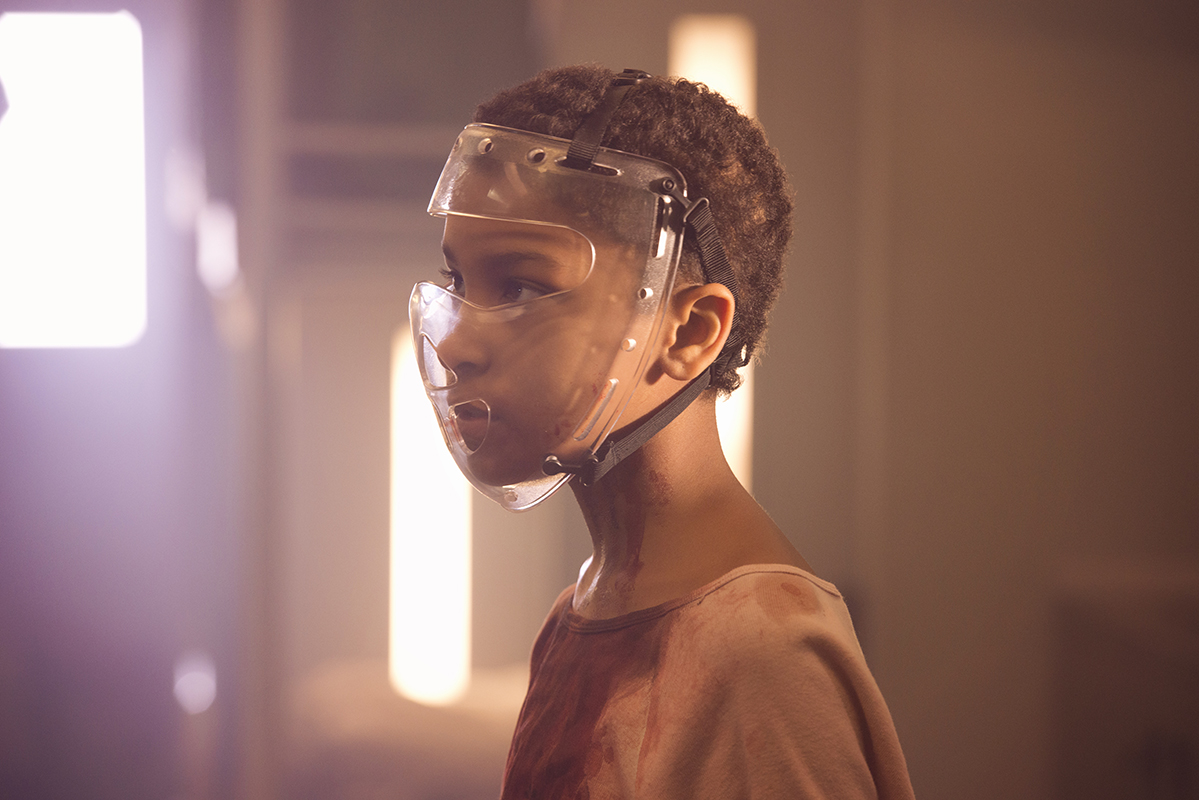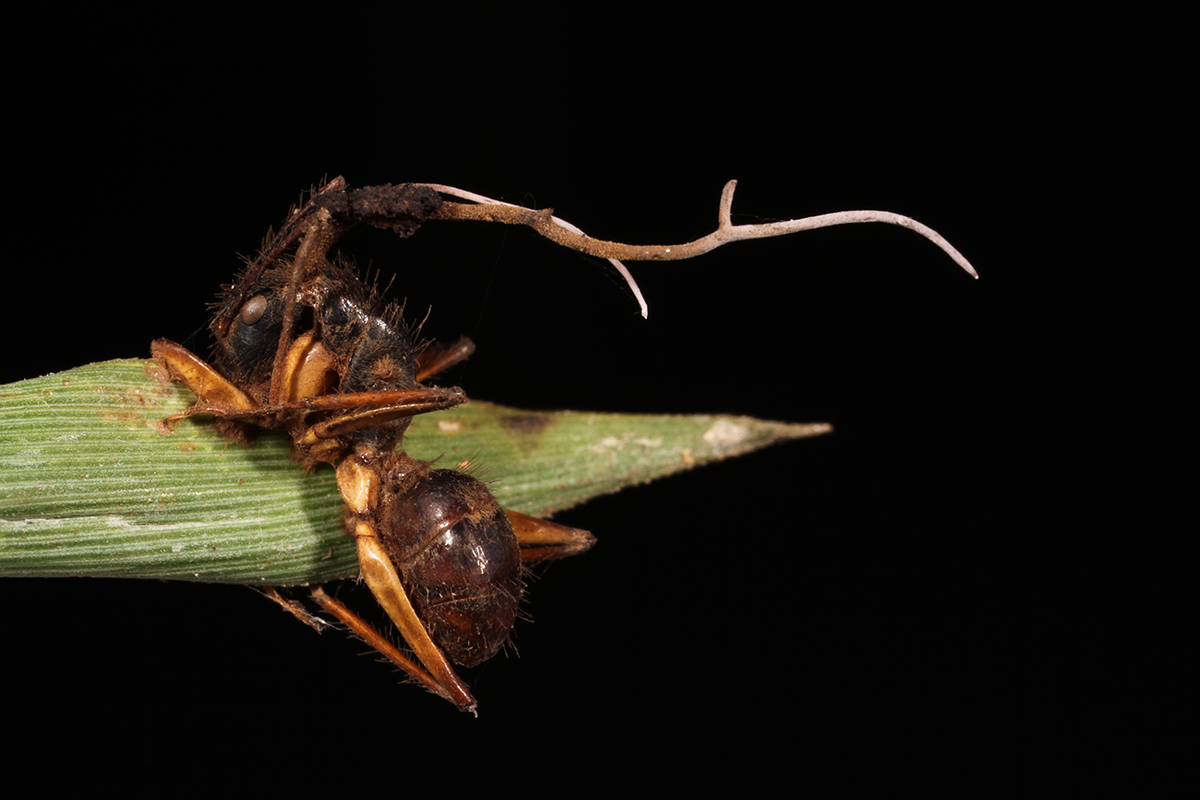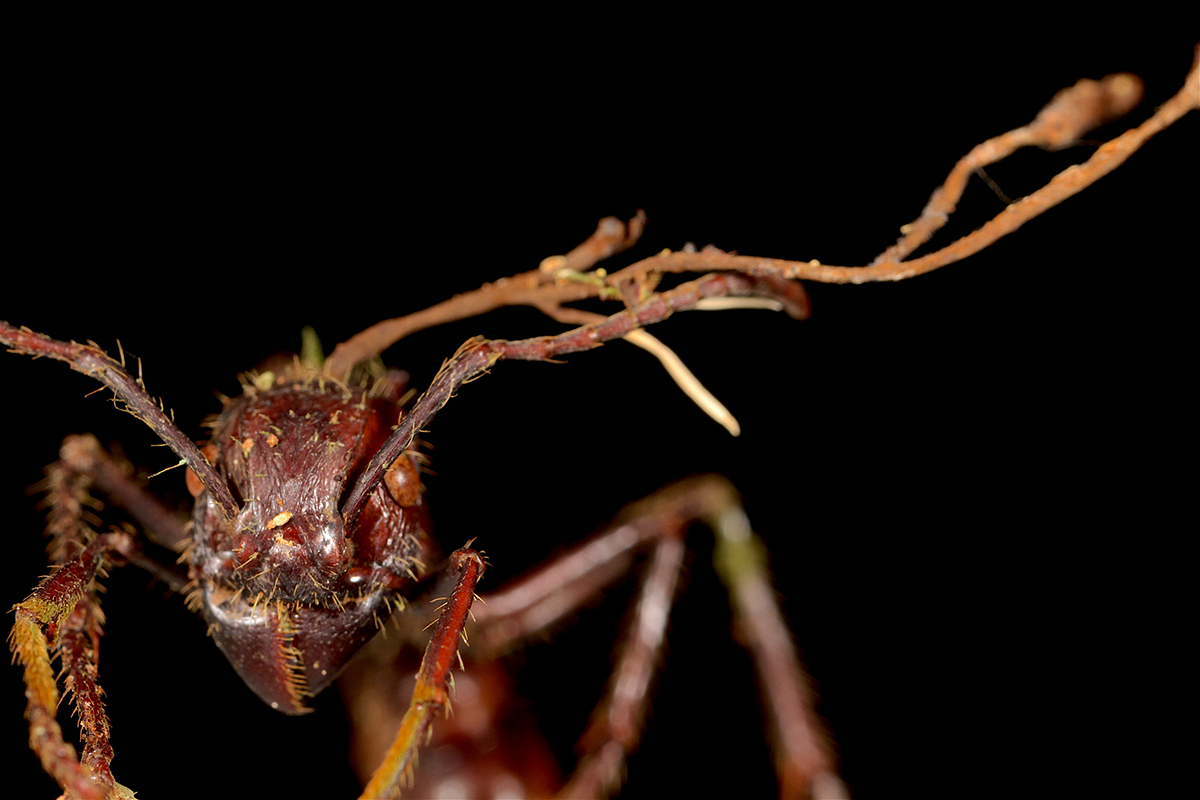Meet a New Kind of Zombie, in the Film 'The Girl with All the Gifts'

A zombie outbreak in a new apocalyptic film has an unusual inspiration — a parasitic fungus that causes zombie-like behavior in ants.
The fungus, Ophiocordyceps unilateralis, is one of about 200 species in its genus that grow on insects, and what it does isn't pretty: First, it invades a host's body, takes over its brain and then erupts from its body to disperse spores.
If you're wondering what that gruesome zombification process might look like in people, brace yourself for the movie "The Girl with All the Gifts" (Saban Films/Lionsgate, 2016), which opened on Feb. 24 in theaters in the U.S. In the film, a fungus similar to O. unilateralis transforms the world's population into mindless, flesh-eating zombies, called "hungries." Melanie, a young girl who is no longer entirely human (played by actress Sennia Nanua), emerges as humanity's last hope. [Zombie Ant Fungus Inspires Film ‘The Girl with All the Gifts’ | Video]
The film begins on a military base in Great Britain, with the outbreak already in its 10th year. Melanie and a group of children housed on the base attend a type of "school" where they are restrained in custom wheelchairs that keep them immobilized when they're around adults — and with good reason. All the children were born to women who were pregnant when the fungus infected them. Their offspring, while not overtly zombie-like, represent the next generation of hungries. They can think and move and act like normal people, but the scent of human flesh triggers the "hungry" response, turning the children into single-minded and deadly predators.
Adults at the site protect themselves from the youthful hungries with salves and clothing that mask their scent. But when the base is overrun by an outside horde of rampaging hungries, Melanie escapes with a group that includes her favorite teacher, Helen Justineau (played by Gemma Arterton), and biologist Dr. Caroline Caldwell (played by Glenn Close), who had been leading the military research to find a cure for the zombie infection. The future looks bleak as they travel the country and see the devastating extent of the outbreak, but Melanie may hold the key to their survival — and could determine the fate of the entire human race.

Zombie science
From the start of the project, the filmmakers said they wanted a scientific explanation for their zombie apocalypse. The nature documentary "The Private Life of Plants" (BBC One, 1995) introduced them to a promising candidate — the fungus O. unilateralis, which parasitizes ants that live mostly in tropical forests, screenwriter Mike Carey said in a statement.
"The spores attach themselves to the ant’s body, and then the fungal mycelia grow up through the carapace of the ant into its nervous system. Basically, the fungus takes the ant and drives it away," Carey explained.
Sign up for the Live Science daily newsletter now
Get the world’s most fascinating discoveries delivered straight to your inbox.
To translate that into how a human parasitized by a mind-controlling fungus might act, director Colm McCarthy searched for examples in the natural world.
"We looked at how grasses sway in the wind: The behavior of at-rest hungries was based on that," McCarthy told Live Science. "We wanted to create an impression for the audience that the hungries belonged in the natural world more than humans did."
The hungries' "activation" mode — when their hunting instinct is triggered by the smell of a nearby human — was inspired by an unlikely source: McCarthy's cat.
"When it sees insects or small birds, it starts to do this odd thing where it clacks its tongue very quickly," he said. "It's an instinctual feeding reaction that all cats have, and we thought that might be an interesting starting place for hunting behavior." [Zombie Animals: 5 Real-Life Cases of Body Snatching]
Neural takeover
The film's creators turned to biologist João Araújo, a doctoral candidate studying the so-called "zombie ant fungus" in the Biology graduate program at Penn State University, to act as the movie's scientific consultant and to ensure that the film correctly represented a parasitic fungus and how it manipulates its host.

For ants, zombification begins when they walk over Ophiocordyceps spores lying on the forest floor; the spores penetrate the ant's exoskeleton and invade its body, suppressing the immune system, Araújo told Live Science in an email.
"After 10 days, the fungus has spread within the host’s body and reaches the neural system, where it will release metabolites — we are all researching to know which metabolites — in order to control the host," he explained.

In the final stages of the parasite's growth, the ant is compelled to leave its nest and attach itself to a plant in a location that's ideal for fungus development; each fungus species guides its ant hosts to seek a particular type of plant as its final resting place, Araújo said.
The ant dies shortly after, and the fungus grows outward, sprouting from the ant's corpse and producing fruiting bodies that shoot spores into the forest undergrowth. Newly released spores germinate structures that attach themselves to other hapless ants, and the cycle begins all over again, according to Araújo. [Mind Control: Gallery of Zombie Ants]
An innocent zombie
Currently, there is no species of parasitic fungus known to affect humans, though Araújo described the possibility as unlikely but "very cool" — a perspective that is perhaps unique to those studying fungi that survive through zombification.
Another highly unusual element in "The Girl with All the Gifts" is Melanie herself — a child "hungry" who retains the essence of her humanity, even though she clearly has been changed by in utero exposure to her mother's parasitism.
"In most zombie films, the monsters are the bad guys and people are good guys. We've tried to make this film challenge that notion," McCarthy said. "In the same kind of way that Shelley's "Frankenstein" story has a tension between the monster and the idea of innocence, we've tried to do a story that has that kind of complexity to it."
"The Girl With All the Gifts" is available to rent online on YouTube and Google Play.
Original article on Live Science.

Mindy Weisberger is an editor at Scholastic and a former Live Science channel editor and senior writer. She has reported on general science, covering climate change, paleontology, biology and space. Mindy studied film at Columbia University; prior to Live Science she produced, wrote and directed media for the American Museum of Natural History in New York City. Her videos about dinosaurs, astrophysics, biodiversity and evolution appear in museums and science centers worldwide, earning awards such as the CINE Golden Eagle and the Communicator Award of Excellence. Her writing has also appeared in Scientific American, The Washington Post and How It Works Magazine. Her book "Rise of the Zombie Bugs: The Surprising Science of Parasitic Mind Control" will be published in spring 2025 by Johns Hopkins University Press.










